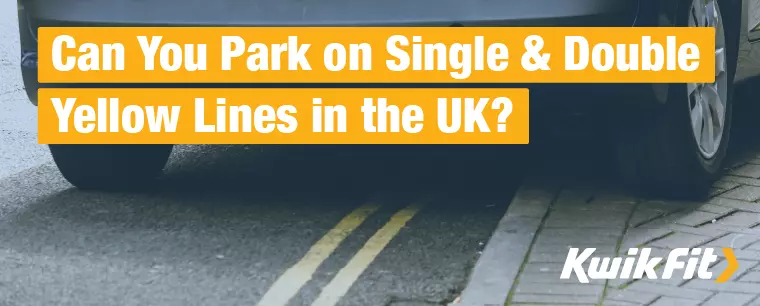Can You Park on Single & Double Yellow Lines in the UK?
Jack Dreyer | Friday 18th August 2023 4:00pm

Weíve all experienced the frustration at the lack of places to park when in a rush Ė and itís certainly tempting to hop on those double yellow lines even though we know we shouldnít. But are you actually not allowed to park on double & single yellow lines and, if not, why?
Letís find out.
Rules for parking on differently-lined roads
In an ideal world, the purpose of road markings is to make clear what you can and canít do in certain areas. While this may seem frustrating and unclear, and sometimes certainly is unclear, the reason for marking roads with single or double lines is often to prevent accidents & to allow for a clear flow of traffic.
Whatís more, thereís a lot of contradictory advice online about whatís allowed or not and when. Most likely, this is because local authorities are now able to set their own restrictions. What is permissible or prohibited in London, for example, may be due to specific local traffic needs.
The lines themselves, technically, are only there to serve as guides for which restrictions are likely to be in place. You need to always check signs along the road for which restrictions apply at that particular place.
Parking, waiting, and offloading

The main thing you need to know when considering parking restrictions is the distinction between parking, waiting, and loading/offloading.
ďParkingĒ a car is perhaps a vague term, but the definition is usually that youíre leaving your car off, locked, and unattended for a period of time. In other words, if youíre parking your car somewhere, youíre going elsewhere.
Waiting refers to, well, waiting. This can be either waiting for passengers to come or to get out of the vehicle, or for a number of other reasons, but it needs to be clear that youíre actually waiting temporarily and not parked.
Offloading and loading can mean temporarily parked, potentially with the engine off, in order to take things out of the vehicle. This tends to apply primarily to commercial vehicles like delivery vans, but can also apply to normal cars.
Now we know the definitions, letís look into whatís allowed and where.
Single yellow lines
Single yellow lines denote areas that you can park, wait, and offload/load on outside of any restricted times. These restricted times will be marked on signs along the length of the road.
Double yellow lines
According to the highway code, double yellow lines indicate areas that you canít stop in at any time unless there are visible time or seasonal allowances. These are usually near junctions or on busy streets.
Double red lines
Double red lines are only really common in the larger cities where consistent flow of traffic through areas is vital. Red lines mean you canít stop at any time or for any reason Ė and usually donít have daytime or seasonal allowances.
Instead, there are often certain marked spaces in which youíre allowed to park for reasons stated on the signs by the bay.
Keep your car happy
Wherever youíre parking, make sure your carís good to go. Book it into your local Kwik Fit for affordable servicing & maintenance.
Any facts, figures and prices shown in our blog articles are correct at time of publication.
Featured Articles
Is it Illegal to Drive With One Headlight?
Saturday 19th July 2025
Wondering if itís illegal to drive with one headlight? Learn about the safety risks and penalties of illegal blown bulbs and why you should fix them promptly.
Air Con in EVs & Hybrids: Experts Answer Your Questions
Monday 30th June 2025
Does air con drain EV batteries? Can you use the air con while charging an electric car? Find out the answers to these questions & more from Kwik Fitís experts.
Why Is Your Car Making a Noise? Fixes & Tips
Friday 13th June 2025
When your car starts making unexpected noises, it can certainly be quite disconcerting; it may be nothing to worry about, but hereís what you need to know.









